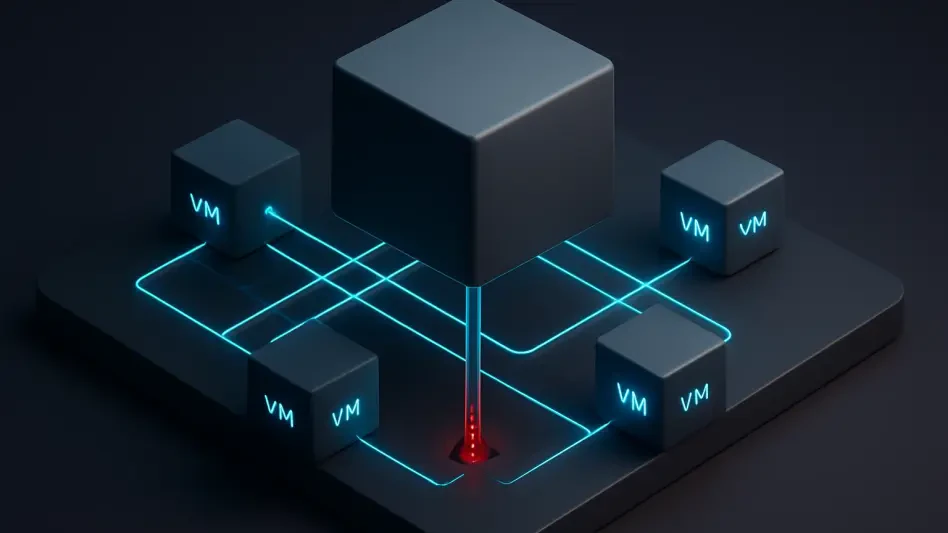The importance of robust cybersecurity in backup solutions cannot be overstated, especially as data security threats escalate globally. Veeam, a prominent player in the field, has recently faced significant challenges in improving its Backup & Replication (B&R) software. A recurring theme in these challenges is addressing vulnerabilities posed by the deprecated BinaryFormatter component. The most recent issue, CVE-2025-23121, with a high-severity score of 9.9, highlights the ongoing struggle for Veeam and the wider tech community to safeguard sensitive data.
Unpacking Veeam’s Security Landscape: A Historical and Current Perspective
Understanding Veeam’s security history is crucial for grasping the intricacy of its current landscape. The software has previously suffered from vulnerabilities, including CVE-2025-23120 and CVE-2024-40711, both exacerbated by the unsafe use of BinaryFormatter. This historical context sets the stage for the company’s strategies as it moves forward to address these flaws amidst an ever-intensifying threat landscape. Addressing these issues is not merely about protecting data; it is a fundamental necessity to maintain trust and reliability in the technology infrastructure.
Moving forward, Veeam’s ongoing efforts to enhance its cybersecurity measures reflect the necessity to anticipate and counteract an expanding range of threats. As the software landscape evolves, the focus on security must remain a top priority to safeguard data integrity and availability against adversaries increasingly adept at exploiting vulnerabilities.
Strategic Insights: Veeam’s Response to Backup Software Vulnerabilities
Navigating BinaryFormatter Vulnerabilities: Current Strategies and Challenges
Veeam’s commitment to addressing BinaryFormatter vulnerabilities centers on maintaining a blacklist for deserialization vectors. Industry experts, however, are divided on the effectiveness of this method. Some suggest that while blacklisting can manage known threats, it may not provide long-term security as new attack vectors can emerge rapidly. Others argue that Veeam should adopt more robust, forward-thinking security frameworks to stay ahead of potential risks.
The debate around Veeam’s approach hinges on whether blacklisting is a sufficient security measure in the face of a dynamic cyber-threat landscape. The necessity to adapt quickly to prevent vulnerabilities underscores the importance of proactive strategies rather than reactive fixes.
Preparing for the Future: Eliminating Deprecated Components
Looking ahead, Veeam plans to phase out the BinaryFormatter entirely in B&R version 13, a promising step toward more secure backup solutions. This transition is anticipated to clear away many of the existing vulnerabilities, influencing the industry by setting a new standard. Early beta testing of B&R version 13 demonstrates Veeam’s dedication to enhancing its security frameworks. This evolution is expected to bring industry-wide changes, opening opportunities for improved security while also posing potential challenges during the transitional phase.
Maintaining security while updating technological components requires a delicate balance between innovation and caution, essential for minimizing risks while embracing new advancements.
Regional Security Practices and Compliance: Global Implications
Security challenges are never constrained to a single region, and Veeam must navigate diverse regulatory requirements across different territories. Such regional practices shape distinct challenges and influence how vulnerabilities are managed globally. Observing the compliance measures reveals a trend toward stricter data protection regulations, necessitating better-informed responses from backup software providers. This has spurred a focus on globally harmonized approaches to tackle security issues, urging Veeam to consider comprehensive strategies rather than region-specific solutions.
Overall, understanding global security trends and compliance measures aids in preparing for future exigencies, ensuring a well-rounded defense against vulnerabilities.
Comparative Analysis: Veeam vs. Industry Security Frameworks
Veeam’s security practices must be viewed in the context of the wider backup software industry. When examining other major players, industry experts point out differences in implementation and advantages of various global security frameworks. The insights gathered from different frameworks might offer Veeam valuable perspectives on enhancing its strategies. Looking at industry-wide practices highlights the potential for collaboration in developing cutting-edge technology to redefine security for data backups.
The potential to learn from others, coupled with innovative mindsets, presents opportunities for transforming backup software security across all platforms.
From Knowledge to Action: Best Practices for Strengthened Security
In light of the discussions, several transformative takeaways can guide the enhancement of security strategies. Effective steps include adopting proactive security measures, integrating comprehensive testing protocols, and prioritizing regular updates to mitigate risks. By leveraging industry-proven practices, businesses can better safeguard their backup operations. These strategies equip organizations with the tools necessary to navigate evolving risks and protect critical data effectively.
Emphasizing actionable insights contributes to a more secure and reliable data protection environment.
Strategic Imperatives for the Future: Veeam and Beyond
The evolving threat landscape demands that Veeam and other industry players continually refine their security mechanisms. Continual improvement and adaptation to emerging threats remain critical, not just for Veeam but for its entire user base. The commitment to proactive engagement with cybersecurity challenges empowers organizations to safeguard their data assets reliably.
Ultimately, understanding the broader implications of security enhancements accentuates the need for ongoing vigilance and innovative approaches to maintain data integrity in an increasingly connected world.








